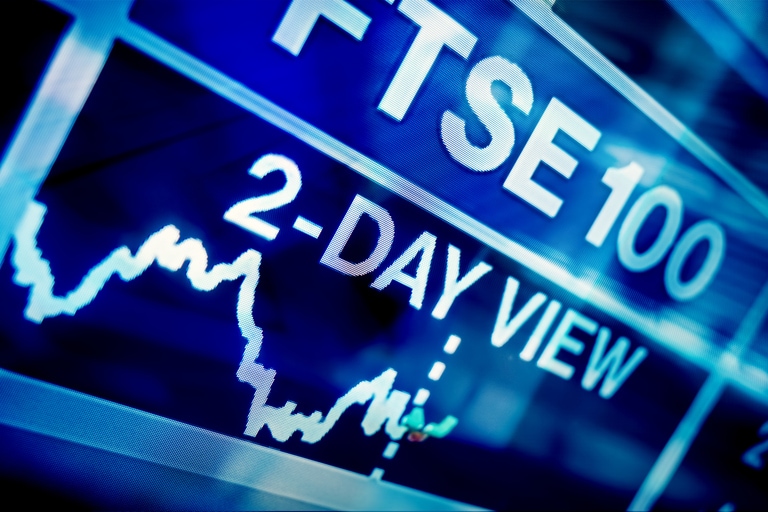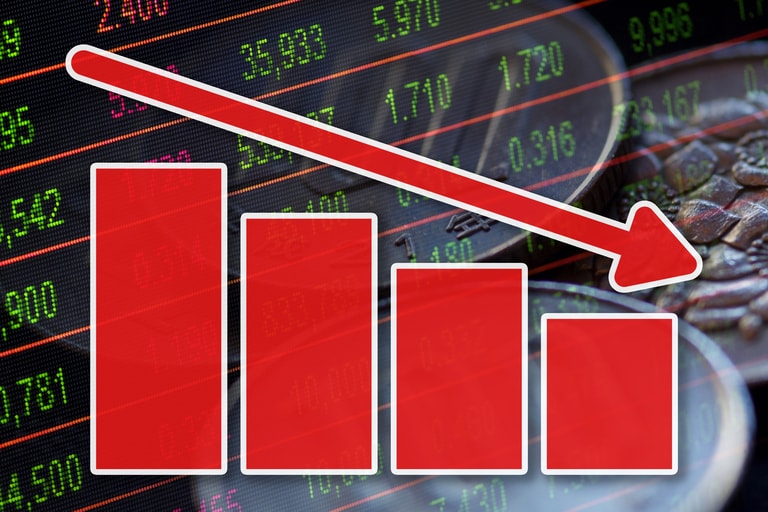This week’s key economic announcements include China’s November trade report and the US producer price index (PPI) reading for November. Meanwhile, in a quiet week for earnings reports, GameStop, Broadcom and British American Tobacco roll up to share their latest results.
OUR TOP THREE EVENTS, 5-9 DECEMBER:
Wednesday – China trade balance (November)
Not long ago, the prospect of China reopening its economy set markets abuzz. That was despite the fact that president Xi Jinping’s signature zero-Covid policy seemed likely to remain in place going in to winter, when large numbers of unvaccinated citizens could be put at risk by a sudden reopening. However, strict lockdown rules this week triggered angry protests in major cities across China, sending markets lower on Monday and leading to a partial easing of restrictions in Shanghai, Guangzhou and Chongqing from Wednesday.
The easing of Covid curbs should boost China’s economy moving forward. However, its trade numbers for November are likely to point to a deep malaise. Although China’s trade figures had held up well over the summer, in October weak consumer demand at home and abroad, a worsening global economic outlook and ongoing supply chain disruptions led to a drop in both exports and imports.
In October, exports from China unexpectedly declined 0.3% year-on-year, versus a 5.7% increase in September, while imports to China fell 0.7% year-on-year, compared to an uptick of 0.3% a month earlier. The slump in exports was the first decline since May 2020, while the drop in imports reflected weak domestic demand amid tight Covid restrictions.
The situation likely worsened in November, with estimates pointing to annual declines of 4.2% for exports and 6.7% for imports.
Wednesday – GameStop Q3 results
With the air finally coming out of the meme stock bubble this year, GameStop shareholders could be forgiven for feeling a little breathless. The last three months have brought relative calm, with the shares appearing finding a base at around $20. That's a far cry from the dizzy heights of 2021, but when the video game retailer reported its Q2 results in September, the shares initially popped higher as losses came in below expectations at $108.7m, or $0.35 a share. The smaller-than-expected Q2 loss was mainly thanks to a $77m inflow following the sale of digital assets. However, sales were disappointing, coming in at $1.14bn, well below expectations of $1.28bn. Inventory levels rose to $734.8m by the end of Q2, a sizeable increase on the year-ago period.
The company still appears keen to reposition itself for the digital era, moving into online streaming and launching a marketplace for non-fungible tokens (NFTs) in July. As part of these ambitions, GameStop announced on 7 September that it had partnered with cryptocurrency exchange FTX “to introduce more GameStop customers to FTX’s community and its marketplaces for digital assets”, according to a GameStop statement.
Following the recent collapse of FTX, shares in GameStop dipped in early November before bouncing back. There is a sense, though, that GameStop may be a little late to the NFT party, since the market for trading digital collectibles has imploded in recent months. Another issue facing the company, besides its ageing, bricks-and-mortar business model, is that its share price still seems too high given that the chain isn’t expected to turn an annual profit until 2025. Losses for Q3 are expected to come in at $0.29 a share.
Friday – US PPI (November)
The most recent US consumer price index (CPI) and producer price index (PPI) readings have helped shape a narrative that inflation in the US has peaked, prompting a sharp fall in yields and pulling the US dollar away from its recent 20-year peaks. In October, headline PPI rose 0.2% month-on-month, the same rate of growth as in September and well down on June’s 1% uptick.
Both CPI and PPI have been rising, but at a slower rate than in the summer. The big question is whether this trend can be maintained. The November PPI reading will serve as a useful barometer ahead of the upcoming CPI report. Together, these data points will help determine how much the US Federal Reserve – which doesn’t want to be seen to go soft on inflation – raises interest rates later this month.
Fed chair Jay Powell’s speech at the Brookings Institution on Wednesday suggested that the Fed intends to slow the pace of interest rate rises, with a 50-basis-point rate hike on the cards in mid-December. The upcoming PPI readings are expected to support the slowdown on rate rises, with headline PPI estimated to have eased to 7.1% in the year to November, from 8% in October, and core PPI falling to 5.8% year-on-year in November from 6.7% a month earlier.
KEY EVENTS OVERVIEW (5-9 DEC):
Monday 5 December
Services PMIs (November)
Recent flash purchasing managers’ index (PMI) readings from the UK, France, Germany and the US all pointed to muted activity in the services sector during November as rising prices in Europe constrained demand. The slide in US services activity was surprising given that headline inflation has eased in recent months. US services PMI fell to 46.1 in November, down from 47.8 in October, amid Fed interest rate hikes and a sharply slowing housing market.
The final iteration of services PMI numbers are expected to highlight the challenges facing central banks as they tighten monetary policy amid a squeeze on consumer incomes.
Tuesday 6 December
RBA interest rate decision
The Reserve Bank of Australia appears to be getting cold feet over its own inflation-busting strategy. Near neighbour the Reserve Bank of New Zealand raised interest rates by another 75 basis points to 4.25% at its most recent meeting, but the RBA’s rate is at just 2.75% after it hiked rates in November by 25 bps.
With inflation in Australia running at 7.3% one might expect the country’s central bank to raise interest rates more aggressively. However, the RBA seems to have one eye on the damage higher rates could do to the cooling domestic housing market, even as it admits that inflation won’t fall back to its target level until 2025.
The bank also cut its growth target for the economy to 3% in 2022, and 1.5% in 2023. RBA governor Philip Lowe said that the bank wanted to slow the pace of rate rises in order to better judge the lag effects of previous hikes, which could take time to trickle down. Economists expect the RBA to raise interest rates by a further 25 bps on Tuesday as policymakers look to balance the need to reduce inflation with calls to protect the housing market.
Wednesday 7 December
China trade balance (November)
See our top three events, above
GameStop Q3 results
See our top three events, above
Bank of Canada interest rate decision
When the Bank of Canada last met at the end of October, they surprised the markets with a 50-basis-point interest rate hike – less than the 75 bps that markets had priced in.
A few weeks earlier, the Reserve Bank of Australia had also opted for a lower-than-expected rate rise, leading many observers to ask what prompted this outbreak of central bank caution. The answer may have something to do with property prices. Canada’s housing market seems to be showing signs of buckling under the strain of higher rates, and further aggressive rate rises could do more harm than good.
Also, inflation in Canada has started to ease, with the October rate unchanged at 6.9%. Further declines in oil prices should help bring inflation down in the coming months. We may see Canada’s central bank raise rates by another 50 bps on Wednesday, but the days of 0.75-point increases seem to be behind us for now.
Thursday 8 December
British American Tobacco Q4 results
Shares in British American Tobacco are up more than 21% year-to-date, making it one of the FTSE 100’s better performers this year. Since the cigarette maker’s half-year numbers came out in July, however, the shares have traded sideways.
While the shares came under pressure amid reports that the EU is considering a levy on vaping products, the stock remains above what appears to be decent support at 3,150p. The levy could bring taxes on vaping products in line with those on cigarettes. Such a levy may prove controversial as it risks discouraging smokers from swapping cigarettes for a less harmful alternative.
British American Tobacco’s revenue in the first half of the year beat expectations, coming in at £12.87bn. So-called “new category” revenue, which includes sales of vaping products, contributed £1.28bn, up 45% year-on-year. Although operating profit fell 25% to £3.68bn, the company maintained its full-year guidance. There was also a £957m impairment charge related to the company’s Russia exit and ongoing costs from a US Department of Justice investigation.
Broadcom Q4 results
Semiconductor maker Broadcom was in the news earlier this year after it struck a deal to pay $61bn for cloud computing company VMWare. The pending acquisition, which is still being scrutinised by competition regulators, is part of Broadcom’s strategy to reduce its reliance on surging semiconductor revenues which, according to Broadcom CEO Hock Tan, won’t last as more manufacturing capacity gets added to the market. It makes sense for Broadcom to diversify further. The company already makes iPhone components and industrial equipment, as well as running a data centre business and a software services unit.
Broadcom reported a Q1 profit of $8.39 a share on sales of $7.7bn, beating expectations on both top and bottom lines. In Q2, the company again beat expectations, posting revenue of $8.1bn. Although the company beat lowered expectations in Q3, Broadcom shares slid below their July low to $415 in September, before rebounding. This represented a 50% retracement of the upwards move from its 2020 low to the record high of late 2021. The stock’s rebound from 18-month lows in early October has tracked the wider US market rally.
Revenue for Q4 is expected to rise to $8.9bn. Profit is forecast to come in at $10.25 a share, while the order book is estimated to have grown to $31bn, with a 50-week lead time.
Friday 9 December
US PPI (November)
See our top three events, above
INDEX DIVIDEND SCHEDULE
Dividend payments from an index's constituent shares can affect your trading account. View this week's index dividend schedule.
SELECTED COMPANY RESULTS
| MONDAY 5 DECEMBER | RESULTS |
| Gitlab (US) | Q3 |
| Powell Industries (US) | Q4 |
| Science Applications International (US) | Q3 |
| TUESDAY 6 DECEMBER | RESULTS |
| Ashtead (UK) | Q2 |
| AutoZone (US) | Q1 |
| Barnes & Noble Education (US) | Q2 |
| Casey's General Stores (US) | Q2 |
| Civitas Social Housing (UK) | Half-year |
| Dave & Buster's Entertainment (US) | Q3 |
| Ferguson (US) | Q1 |
| HealthEquity (US) | Q3 |
| Paragon Banking (UK) | Full-year |
| SentinelOne (US) | Q3 |
| Signet Jewelers (US) | Q3 |
| WEDNESDAY 7 DECEMBER | RESULTS |
| Brown-Forman (US) | Q2 |
| Campbell Soup (US) | Q1 |
| GameStop (US) | Q3 |
| Greif (US) | Q4 |
| John Wiley & Sons (US) | Q2 |
| Moonpig (UK) | Half-year |
| Redde Northgate (UK) | Half-year |
| United Natural Foods (US) | Q1 |
| THURSDAY 8 DECEMBER | RESULTS |
| British American Tobacco (UK) | Q4 |
| Broadcom (US) | Q4 |
| Chewy (US) | Q3 |
| Costco Wholesale (US) | Q1 |
| Del Monte Foods (US) | Q2 |
| DocuSign (US) | Q3 |
| DS Smith (UK) | Half-year |
| Frasers Group (UK) | Half-year |
| FRIDAY 9 DECEMBER | RESULTS |
| Berkeley Group Holdings (UK) | Half-year |
| Johnson Outdoors (US) | Q4 |
Note: Company announcements are subject to change. Dates correct at the time of writing.
CMC Markets erbjuder sin tjänst som ”execution only”. Detta material (antingen uttryckt eller inte) är endast för allmän information och tar inte hänsyn till dina personliga omständigheter eller mål. Ingenting i detta material är (eller bör anses vara) finansiella, investeringar eller andra råd som beroende bör läggas på. Inget yttrande i materialet utgör en rekommendation från CMC Markets eller författaren om en viss investering, säkerhet, transaktion eller investeringsstrategi. Detta innehåll har inte skapats i enlighet med de regler som finns för oberoende investeringsrådgivning. Även om vi inte uttryckligen hindras från att handla innan vi har tillhandhållit detta innehåll försöker vi inte dra nytta av det innan det sprids.






